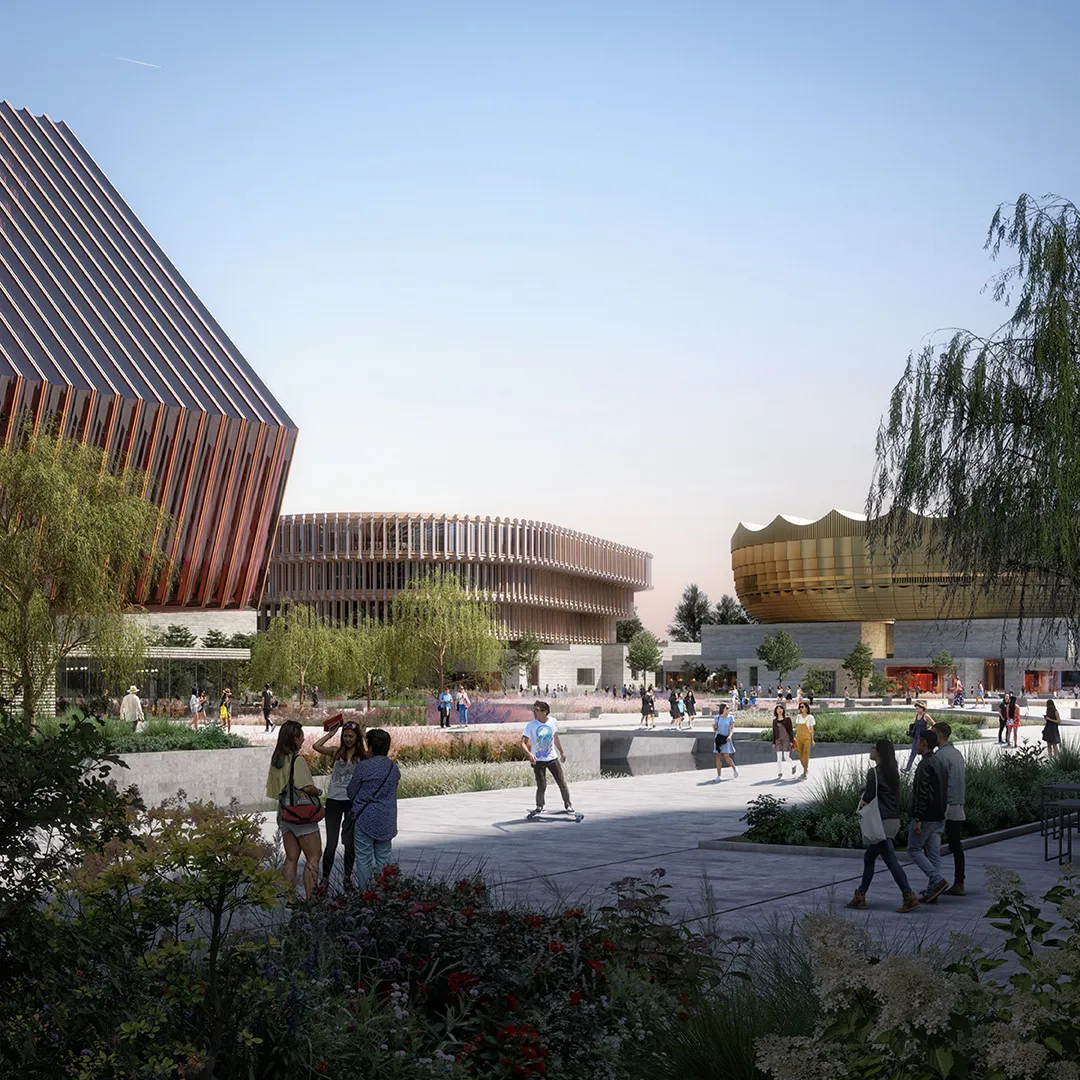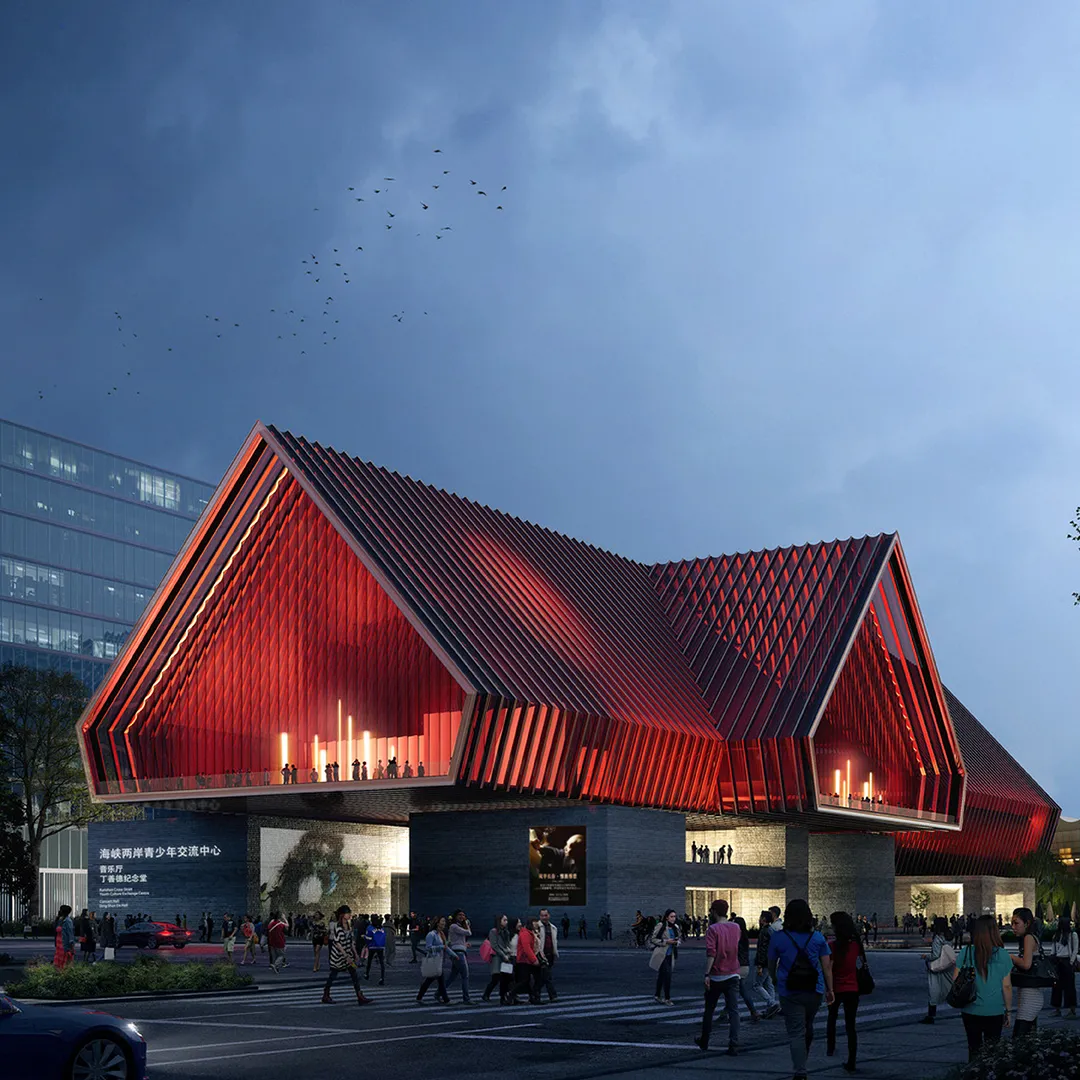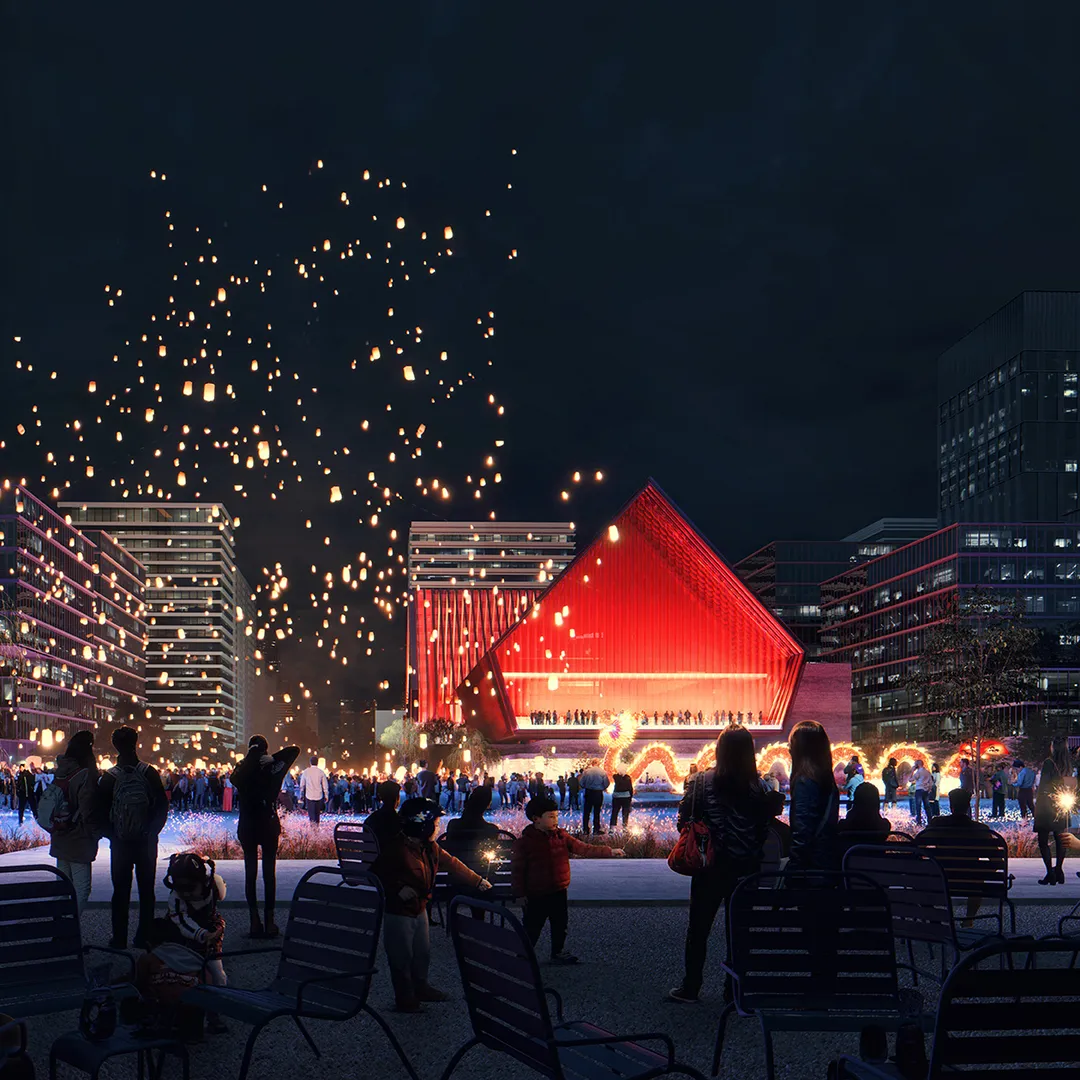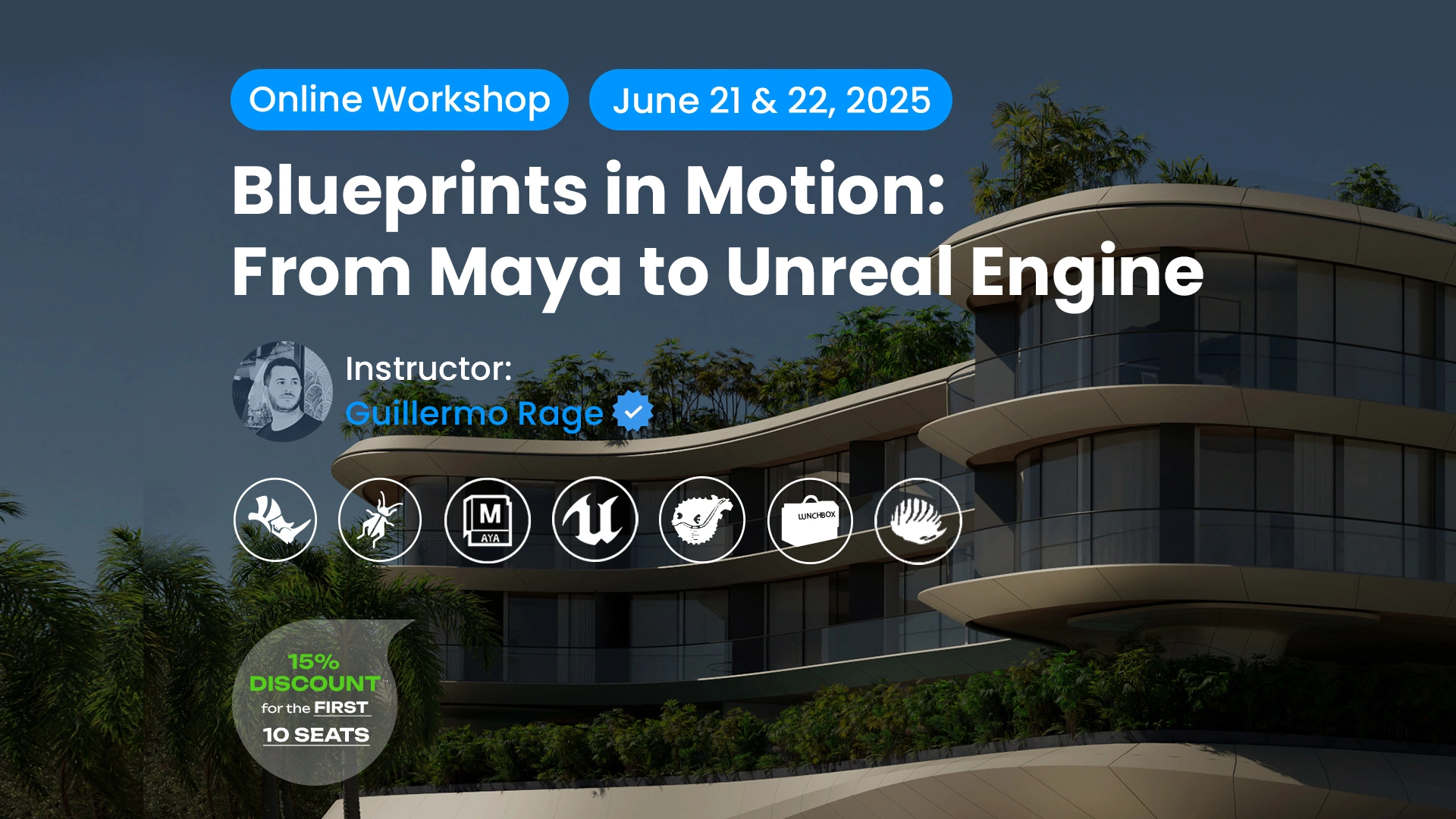International design practice Hassell Studio has revealed its competition entry for a major new cultural precinct in Jiangsu Province, delivering a bold, integrated vision that redefines what a civic and cultural hub can be in the 21st century.
Hassell’s proposal embraces a networked strategy, five distinct yet interconnected buildings arranged around a restored wetland landscape. The program includes a concert hall, an art gallery, a library, a sports centre, and a public plaza, all interwoven to form a precinct that is both ecologically grounded and culturally vibrant.

The master plan features the concert hall, a space designed for performance, serving as a platform for civic engagement and multimedia expression. “We saw the concert hall not as the isolated centerpiece, but as a central node in a living, breathing urban ecosystem,” Hassell shared via their social channels.
This deliberate decentralization sets the tone for the entire project. The surrounding buildings form a space that prioritizes movement, connection, and discovery. Paths and waterlines draw visitors through the precinct in a manner more aligned with a natural park than a formal civic complex.

Hassell Designs with Nature, Not Around It
A defining element of the design is the reintroduction and restoration of the site’s wetland ecology. Rather than treating the landscape as a backdrop, Hassell positions it as a central design driver. The wetland binds the architecture into a coherent whole, enabling visual and physical permeability between structures and promoting biodiversity. The result is a campus that breathes open, porous, and constantly shifting with light, season, and activity.

Crucially, the architecture pays homage to Jiangsu’s regional heritage. Each building incorporates references to traditional forms and materials while projecting a contemporary civic identity. In this way, the precinct speaks both to the past and the future, a narrative that resonates deeply in a region known for its cultural continuity and rapid modernization.

Hassell’s team approached the brief with a mindset that challenged conventional typologies. A library here becomes a learning commons immersed in nature. The art gallery is integrated into the everyday life of the site. Even the sports centre participates in the cultural dialogue, positioned not as a separate utility but as a contributor to the social atmosphere of the precinct.

The public plaza acts as an everyday gathering space, while flexible event zones throughout the site encourage community use, pop-up programming, and unexpected cultural encounters. The precinct is envisioned as a civic stage, adaptable to performance, protest, celebration, and everyday interaction.
Importantly, the project resists the trend of over-iconic civic architecture. Instead, Hassell offers a framework that evolves, adapts, and supports a multiplicity of cultural expressions. It’s systemic logic how buildings, ecology, and people interrelate over time.
At the intersection of ecology, heritage, and technology, design thinking is evolving. Learn how to work with the latest tools shaping this future, from parametric design to environmental modeling, at PAACADEMY.

In doing so, the Jiangsu Cultural Precinct aligns closely with the ethos of a process-driven approach where architecture becomes the outcome of interdependent systems.
Hassell’s entry speaks to a broader shift in architectural thinking away from isolated symbols and toward integrated, adaptive environments. It represents a compelling vision for the future of civic space in China that emerges through the entanglement of architecture, landscape, and community life.

























Leave a comment